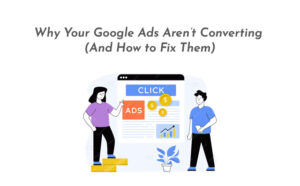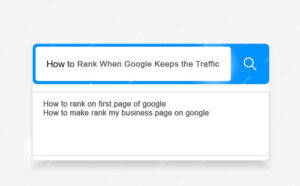Introduction
A/B testing, also known as split testing, is a critical component of any paid advertising strategy. By systematically testing different variations of ads or landing pages, marketers can optimize campaign performance and maximize return on investment. In this article, we’ll explore the importance of A/B testing in paid advertising and how it can optimize campaign performance.
Understanding A/B Testing
What is A/B Testing?
A/B testing is a method of comparing two versions of a marketing asset, such as an ad or landing page, to determine which one performs better. It involves dividing the audience into two groups and exposing each group to a different version of the asset to measure their response.
How Does A/B Testing Work?
In A/B testing, one version of the asset (the control) is compared against another version (the variant), with a single variable changed between the two. By tracking metrics such as click-through rates, conversion rates, and engagement metrics, marketers can determine which version performs better and make data-driven decisions to optimize future campaigns.
Types of Variables Tested in A/B Testing
Common variables tested in A/B testing include headline copy, call-to-action buttons, images, colors, layouts, and pricing strategies. By systematically testing these variables, marketers can identify which elements resonate best with their target audience and drive the desired actions.
You would like to read: Google Ads Mastery: Transforming Traffic & Conversions!
Benefits of A/B Testing
Enhanced Decision Making
A/B testing provides valuable insights into what works and what doesn’t in a paid advertising campaign. By testing different elements and measuring their impact on key metrics, marketers can make informed decisions about which strategies to pursue and which to abandon.
Improved Campaign Performance
One of the primary benefits of A/B testing is its ability to improve campaign performance. By identifying and implementing changes that lead to higher conversion rates or lower cost-per-acquisition, marketers can optimize their campaigns for maximum effectiveness.
Increased Return on Investment (ROI)
Ultimately, the goal of A/B testing is to increase return on investment. By optimizing campaign performance and driving higher conversion rates, marketers can generate more leads, sales, or other desired outcomes for the same budget, resulting in a higher ROI.
Key Elements of A/B Testing
Hypothesis Formulation
Before conducting an A/B test, marketers must formulate a hypothesis about what they expect to change and how it will impact campaign performance. This hypothesis serves as a guiding principle for the test and helps ensure that the results are meaningful and actionable.
Test Design and Implementation
Once a hypothesis has been formulated, marketers must design and implement the A/B test in a controlled environment. This involves creating the control and variant versions of the asset, setting up the test parameters, and deploying the test to the target audience.
Data Collection and Analysis
During the test, marketers collect data on key metrics such as click-through rates, conversion rates, and engagement metrics. After the test is complete, they analyze the data to determine which version performed better and draw conclusions about the effectiveness of the changes tested.
Best Practices for A/B Testing
Test One Variable at a Time
To ensure accurate results, marketers should only test one variable at a time in an A/B test. This allows them to isolate the impact of each change and draw clear conclusions about its effectiveness.
Ensure Statistical Significance
In order for A/B test results to be meaningful, they must be statistically significant. This means that the observed differences between the control and variant versions of the asset are unlikely to have occurred by chance alone.
You would like to read: Maximizing ROI: The Importance of Audience Targeting in Paid Advertising
Continuously Iterate and Improve
A/B testing is an ongoing process, not a one-time event. Marketers should continuously iterate and improve their campaigns based on the insights gained from A/B testing to stay ahead of the competition and maximize results.
Case Studies: Successful Implementation of A/B Testing
Company A: Optimizing Ad Copy for Higher Click-Through Rates
Company A conducted an A/B test to compare two different versions of their ad copy. By testing different headlines and calls-to-action, they were able to identify a variation that resulted in significantly higher click-through rates and ultimately drove more traffic to their website.
Company B: Testing Landing Page Designs for Improved Conversion Rates
Company B wanted to improve the conversion rate of their landing pages. They conducted an A/B test comparing two different page designs, including variations in layout, imagery, and messaging. The test revealed a design that led to a 20% increase in conversions, resulting in a significant boost in sales.
Common Pitfalls to Avoid in A/B Testing
Ignoring Sample Size Requirements
One common pitfall in A/B testing is ignoring sample size requirements. In order for test results to be statistically significant, a sufficient number of participants must be included in the test group. Failing to meet this requirement can lead to unreliable results.
Drawing Conclusions Too Soon
Another common pitfall is drawing conclusions too soon based on incomplete or inconclusive data. It’s important to let tests run for a sufficient amount of time to gather enough data to draw meaningful conclusions.
Neglecting to Document and Analyze Results
Finally, neglecting to document and analyze A/B test results can hinder the effectiveness of future tests. Marketers should carefully document the details of each test, including the variables tested, the methodology used, and the results observed, to inform future testing strategies and ensure continuous improvement.
Conclusion
In conclusion, A/B testing is a critical tool for optimizing campaign performance in paid advertising. By systematically testing different elements and measuring their impact on key metrics, marketers can make data-driven decisions to improve campaign effectiveness and maximize return on investment. Incorporating A/B testing into paid advertising strategies is essential for staying competitive in today’s digital landscape and driving long-term success.










